Protect against MASD: Why a 100% cyanoacrylate works better
Learn what this effective moisture barrier has in common with super glue
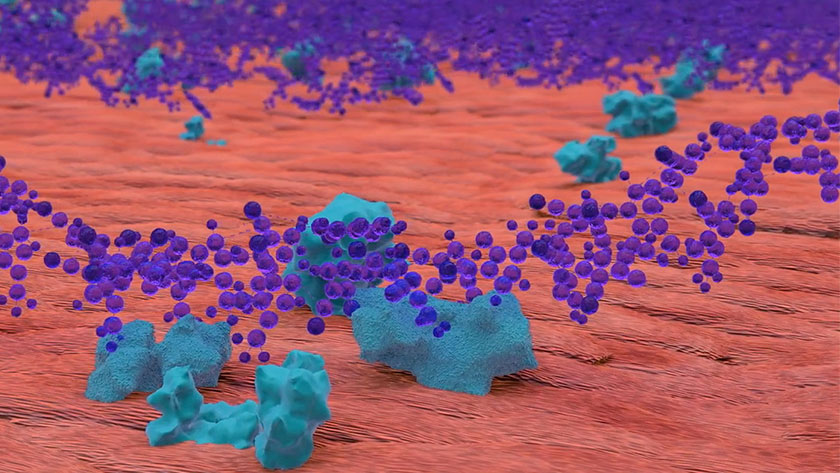
Our skin requires a delicate balance of dryness and moisture, but multiple factors can upset this optimal level. While severely dry skin can lead to problems, too much moisture can cause damage too. The right tools and strategies can help protect your patients’ fragile skin from breakdown due to moisture.
Moisture-associated skin damage (MASD) occurs when skin is exposed to moisture, often combined with friction, for extended periods of time, leading to skin breakdown, irritation and odor. MASD can be costly and painful for your patients.
Distinguish types of MASD based on where moisture comes from:
- Incontinence-associated dermatitis (IAD): urine or stool
- Peristomal dermatitis: discharge around an ostomy
- Periwound dermatitis: exudate at the edge of a wound
- Intertriginous dermatitis: moisture trapped between opposing skin surfaces
Help manage MASD in three key steps
When it comes to managing moisture and improving patient outcomes, it’s important to follow guidelines that promote a standardized approach to skin and wound care.
- Routinely monitor areas of the skin that may be prone to moisture, such as skinfolds, groin, buttocks, inner thigh, perianal and perineal areas, as well as around ostomies and wounds. Learn how to do a comprehensive skin assessment.
- Manage wound exudate with dressings chosen for proper absorbency.
- Apply a skin protectant or barrier film to the skin when appropriate.
Skin protectant ingredients matter
One of the key steps to any skin and wound care routine is using a skin protectant or barrier that has the right ingredients.
In the past, solvent-based skin barriers have been the standard. But the breakthrough technology of Marathon Liquid Skin Protectant offers clinicians an advanced way to manage MASD that could minimize shortcomings of solvent-based barriers.
Marathon helps guard skin—intact or damaged—against three types of MASD: IAD, peristomal wounds and periwounds.
What makes Marathon so effective? Its non-cytotoxic 100% cyanoacrylate formula.

“Clinicians have options when it comes to protecting skin from the effects of MASD, but the unique 100% cyanoacrylate formula of Marathon has benefits that make it the easy choice,” —Kristin White RN, BSN, CWON, Medline Clinical Education Specialist, Acute Care Sales-Skin Health
The science behind Marathon
Cyanoacrylates were originally known for their use in superglues and later as adhesives for post-surgical wound closure. The chemical properties of cyanoacrylates also give Marathon its durability and flexibility to protect skin from breakdown caused by friction, shear and moisture.
Here’s how it works: Marathon consists of individual molecules, or cyanoacrylate-based monomers. Each of these monomers has a chemical group that is sensitive to moisture. When Marathon is applied to the skin, the monomers form long chains, a process that continues until all molecules have either joined to each other or to molecules on the skin, which anchors them to the skin’s surface.¹
Chemical reactions make Marathon stronger
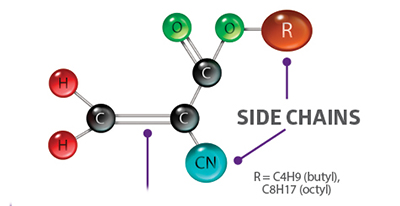
Marathon monomer molecule
The double bond between the two carbon atoms breaks when the monomer polymerizes, allowing it to join another monomer molecule.
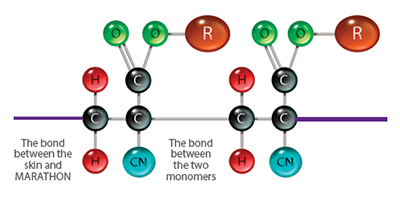
Marathon polymer chain
This process is repeated, forming a polymer film that protects the skin.
The standard solvent-based skin protectant contains a small percentage of cyanoacrylates, but ex vivo studies show that nonreactive materials in this kind of product make it less effective than a 100% cyanoacrylate formula.

Marathon is more robust
Designed to stay on the skin for up to three days, Marathon resists removal by bodily fluids or mere cleansing, because it bonds to the skin until dead skin cells shed naturally. According to an article in Advances in Skin and Wound Care, “Cyanoacrylates that are formulated with diluting solvents will tend to produce a thinner and less robust protective film.”²
A study on pig skin showed decreased coverage and a reduction in film thickness when using a solvent-based product. In fact, the study showed that the layer of Marathon was more than five times thicker than the solvent-based barrier.¹
Marathon covers with no gaps
Solvent-based skin protectants are like a thin coat of paint, because much of the solvent is actually lost to evaporation. Studies observe gaps between solvent-based barriers and the skin, whereas Marathon’s 100% cyanoacrylate formula chemically bonds to the skin, creating a layer with no visible gaps.³
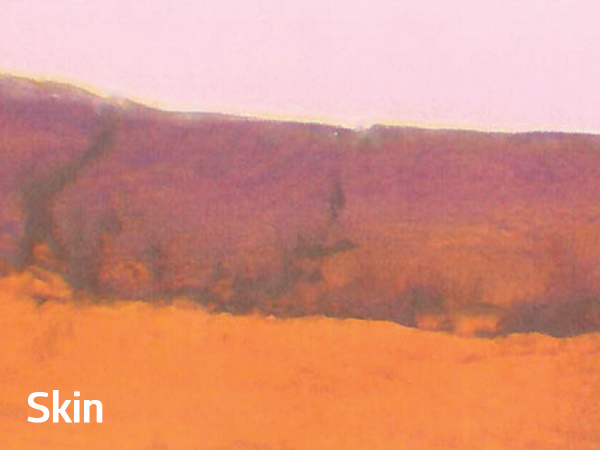
Cyanoacrylate-based barrier
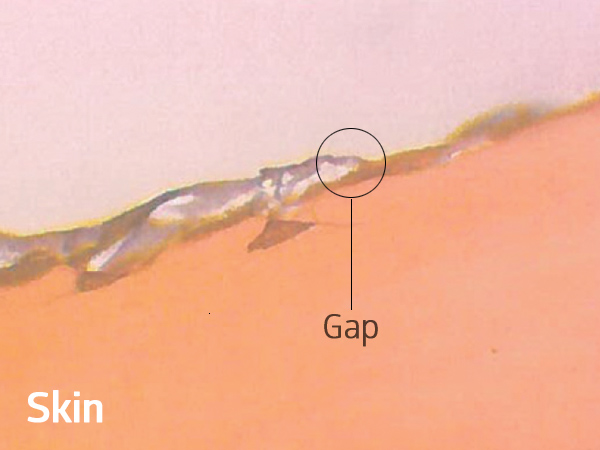
Solvent-based barrier
The fuller coverage also helps reduce friction between the protected skin and other surfaces. “When you look through a microscope and zoom into the skin, you see that the skin is not smooth,” explains leading wound care expert Dr. Amit Gefen, Professor in the Department of Biomedical Engineering, Tel Aviv University, Israel, and Medline consultant. “What Marathon is doing is filling those little gaps and creating a smooth surface.”
Marathon is comfortable for patients, easy for clinicians
Solvent-based protectants often use alcohol as their solvent, which can sting, especially when applied to damaged skin. Marathon’s 100% cyanoacrylate formula is solvent-free. Although there are some solvent-based options that don’t use alcohol, testing shows that the amount of solvent that evaporates makes their bonds to the skin weaker and less durable than Marathon.³
The strength of Marathon’s bonding to the skin allows it to remain in place up to three days, which also makes compliance easier for both clinicians and patients.
In addition, an ex vivo study demonstrated that solvent-based barriers can remain tacky, potentially causing other products to stick to it. Filter paper applied to the solvent-based product was more difficult to pull off the solvent-based barrier, pulling up skin with it. The study authors conclude, “Controlled trials with clinically relevant materials must be conducted to determine whether the mixed polymer product adheres to these surfaces and possibly leads to stripping of the skin surface as was seen here an ex vivo animal model.”¹
When comparing standard, solvent-based skin protectants with 100% cyanoacrylate formula, it’s clear that Marathon’s advanced technology offers many advantages. Marathon’s 100% cyanoacrylate formula has been shown to be more durable, 5 times thicker, non-sticky and sting-free.
Key takeaway
Prolonged exposure to moisture can lead to skin breakdown and other problems. That’s why it’s important to follow skin and wound care best practices and choose best-in-class skin products like Marathon Liquid Skin Protectant. Its 100% cyanoacrylate formula has been shown to improve patient outcomes and make compliance easier.
It takes a system of products to truly manage all types of MASD and improve outcomes. Download this guide to help standardize your product selections, from skin cleansers to antifungal powders to wicking sheets, such as Remedy Intensive Skin Therapy DriGo-HP Antibacterial Wicking Sheet. DriGo-HP can be utilized to manage moisture and minimize skin-on-skin friction, potentially reducing the likelihood of ITD between skinfolds.
Learn more about MASD management solutions:
What more can you do to fight MASD?
Request a free sample of Marathon
Watch the webinar: Dr Mikel Gray talks about ITD
Incontinence: highlight the problem to lower the risk
Watch the webinar: Dr. Barbara Bates-Jensen talks about IAD
References(Accessed January 14, 2021):
- Gibson DJ. An Ex Vivo Comparison of 2 Cyanoacrylate Skin Protectants. J Wound Ostomy Continence Nurs. 2018;45(1):31-36. doi:10.1097/WON.0000000000000391. Data on file.
- Woo KY, Beeckman D, Chakravarthy D. Management of Moisture-Associated Skin Damage: A Scoping Review. Adv Skin Wound Care. 2017;30(11):494-501. doi:10.1097/01.ASW.0000525627.54569.da. Available at https://www.ncbi.nlm.nih.gov/pmc/articles/PMC5657465/
- Vlahovic TC, Hinton EA, Chakravarthy D, Fleck CA. A review of cyanoacrylate liquid skin protectant and its efficacy on pedal fissures. J Am Col Certif Wound Spec. 2011;2(4):79-85. Published 2011 Mar 15. doi:10.1016/j.jcws.2011.02.003. Available at https://www.ncbi.nlm.nih.gov/pmc/articles/PMC3601869/
